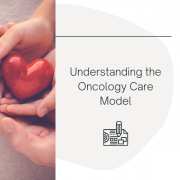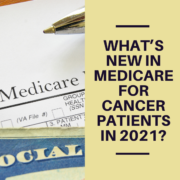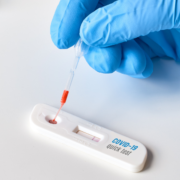The High Cost of Five Percent: The Importance of Capping Annual Out-of-Pocket Prescription Drug Costs for Medicare Part D Beneficiaries
This blog was originally published by Cancer Support Community by Kim Czubaruk here.
Tuesday, June 25, 2019
Background on Medicare Part D
Approximately 43 million Americans are enrolled in Medicare Part D – a voluntary outpatient benefit provided through private health insurance plans approved by the federal government. These plans assist seniors in affording their prescription medications. However, for people with complex and serious health conditions who depend on high-cost drugs, affording medications under Medicare Part D is becoming more and more difficult. Below is a break-down of the different payment phases in Medicare Part D and an explanation of why imposing a cap (limit) on the amount beneficiaries pay out-of-pocket each year for prescription drugs is more important than ever.
The Different Payment Phases of Medicare Part D
While there are some differences between Part D plans, all Medicare Part D plans have the following:
- A Monthly Premium – varies in cost by the plan selected (averaging $33.19/month in 2019) and must be timely paid each month to maintain coverage.
- An Annual Deductible – varies in cost by the plan selected (but cannot exceed $415/year in 2019) and must be paid in full by the beneficiary before the Part D plan covers any costs of prescription drugs.
- The Initial Coverage Phase – begins after the beneficiary has paid his or her annual deductible and triggers the Part D plan’s obligation to cover its share of the cost of the beneficiary’s prescription drugs.
- Coverage Gap Phase (also known as the Doughnut Hole) – begins after the beneficiary and the Part D plan have paid a combined pre-determined amount for prescription drugs ($3820 in 2019) and triggers a phase where the beneficiary is obligated to pay the entire cost of his or her prescription drugs.
- The Catastrophic Phase – begins after the beneficiary has paid a pre-determined amount in out-of-pocket costs ($5100 in 2019) for prescription drugs and triggers reduced beneficiary cost-sharing obligations for the remainder of the coverage period (in 2019, either 5% of the cost for each prescription medication, or $3.40 for each generic drug and $8.50 in for each brand-name drug, whichever is greater).
Catastrophic Phase of Medicare Part D
Thankfully, most Medicare Part D beneficiaries in 2019 will not have out-of-pocket prescription drug costs that exceed $5100. However, the high price of prescription drugs used to treat cancer and other serious medical conditions is causing more and more Medicare Part D beneficiaries to reach $5100 in out-of-pocket drug costs, sometimes early in the calendar year. When this happens, a beneficiary enters the Catastrophic Phase of Medicare Part D. What does this mean and why is it important?
- Once in the Catastrophic Phase, a beneficiary pays 5% of the cost for each prescription medication, or $3.40 for each generic drug and $8.50 for each brand name drug, whichever is greater;
- This payment obligation continues for the remainder of the calendar year;
- There is currently no cap or limit on the amount a beneficiary pays out-of-pocket annually in the Catastrophic Phase.
The 5% beneficiary cost-sharing in the Catastrophic Phase is the lowest cost-sharing percentage in Medicare Part D and is intended to minimize the cost burden on beneficiaries who have already incurred high out-of-pocket drug costs in any given calendar year. However, unlike commercial insurance plans, Medicare Part D does not cap or limit a beneficiary’s out-of-pocket prescription drug costs in a calendar year. Despite the good intentions behind the low 5% cost-sharing, the combined effect of high-priced prescription drugs and the absence of an out-of-pocket cap is making the Catastrophic Phase the costliest of all Medicare Part D Phases for an increasing number of beneficiaries.
Out-of-Pocket Cap in Medicare Part D
Creating an out-of-pocket cap for prescription drug costs in Medicare Part D would protect beneficiaries from unaffordable prescription drug prices and enable cancer patients and others confronting serious health conditions to focus on their health and take steps to avoid financial toxicity. There is draft legislation currently pending in the United States House of Representatives to cap out-of-pocket costs for Medicare Part D beneficiaries. The Cancer Support Community is encouraged by this development and will continue to monitor the progress of the draft legislation and voice the interests and concerns of cancer patients throughout the process.
To learn more about issues impacting cancer patients and engage in advocacy efforts, sign up to be a member of our Grassroots Advocacy Network.










